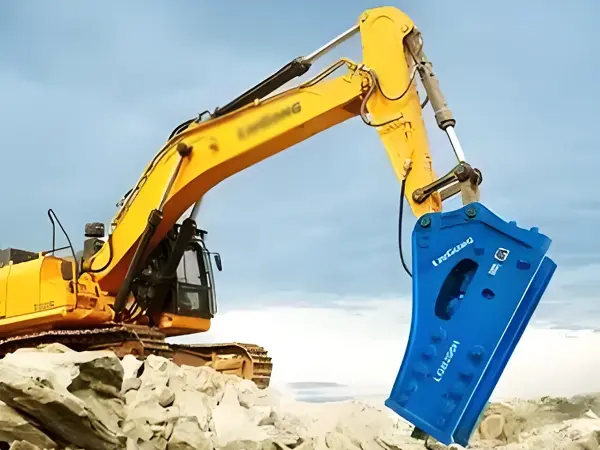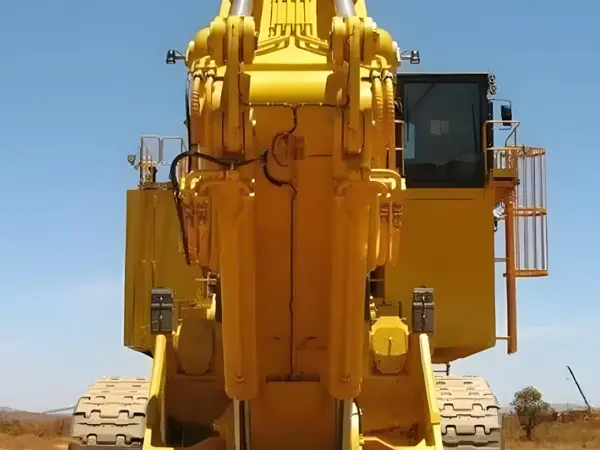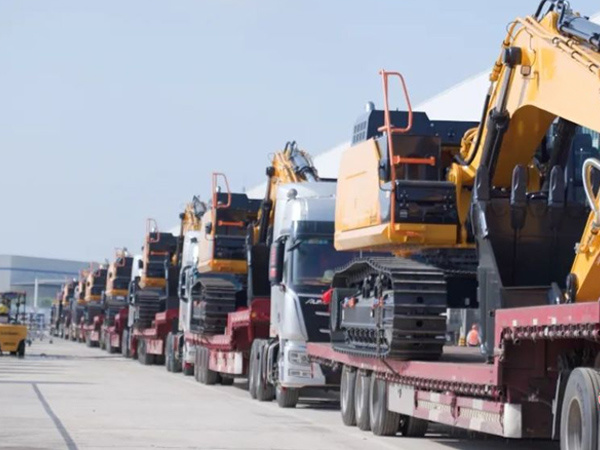Troubleshooting Common Issues with Crawler Hydraulic Excavators: A Comprehensive Guide for Operators and Technicians
Release time:
2025-07-03
Troubleshooting Common Issues with Crawler Hydraulic Excavators Table of Contents Introduction to Crawler Hydraulic Excavators Understanding Hydraulic Systems in Excavators Common Issues with Crawler Hydraulic Excavators 1. Hydraulic Problems 2. Engine Issues 3. Electrical Failures 4. Mechanical Failures Effect
Troubleshooting Common Issues with Crawler Hydraulic Excavators
Table of Contents
- Introduction to Crawler Hydraulic Excavators
- Understanding Hydraulic Systems in Excavators
- Common Issues with Crawler Hydraulic Excavators
- Effective Troubleshooting Tips
- Preventative Maintenance for Crawler Hydraulic Excavators
- When to Call Professional Technicians
- Conclusion
- FAQs
Introduction to Crawler Hydraulic Excavators
Crawler hydraulic excavators are essential machinery in construction and excavation projects. Their ability to dig, lift, and move heavy materials makes them invaluable assets on any job site. However, these machines are not without their challenges. Like any heavy equipment, crawler hydraulic excavators can experience issues that can hinder performance and lead to costly downtime. This guide aims to provide operators and technicians with the knowledge needed to troubleshoot these common problems effectively.
Understanding Hydraulic Systems in Excavators
At the heart of a crawler hydraulic excavator is its hydraulic system. This system relies on the movement of hydraulic fluid to transfer power and control various functions such as boom movement, bucket operation, and swing capabilities. Understanding how this system operates is crucial when diagnosing issues. Key components include:
- **Hydraulic Pump**: Converts mechanical energy into hydraulic energy.
- **Hydraulic Cylinders**: Facilitate the movement of the boom and bucket.
- **Hydraulic Fluid**: The fluid medium that transfers power throughout the system.
- **Filters and Reservoirs**: Ensure the cleanliness of the hydraulic fluid and maintain appropriate fluid levels.
Regular inspection of these components can help prevent many issues before they become serious problems.
Common Issues with Crawler Hydraulic Excavators
Despite their robust design, crawler hydraulic excavators can face several issues. Understanding these problems and their symptoms can aid in effective troubleshooting.
1. Hydraulic Problems
Hydraulic issues are among the most common problems encountered with crawler hydraulic excavators. These can include:
- **Loss of Power**: A decrease in hydraulic power can cause sluggish or unresponsive movements. This can be traced back to low hydraulic fluid levels, a clogged filter, or a failing hydraulic pump.
- **Unusual Noises**: Grinding or whining sounds may indicate low fluid levels or air trapped in the hydraulic system. This should be addressed immediately to prevent severe damage.
- **Leaking Hydraulic Fluid**: Leaks can occur in hoses, cylinders, or connections, leading to a drop in performance. Regularly inspecting these components can help catch leaks early.
2. Engine Issues
Engine-related problems can also impact the performance of crawler hydraulic excavators. Common symptoms include:
- **Overheating**: If the engine temperature rises beyond the normal range, it may lead to shutdowns or damage. Check coolant levels and inspect for obstructions in the cooling system.
- **Starting Difficulties**: If the excavator struggles to start, this could indicate issues with the battery, starter motor, or fuel system.
- **Excessive Smoke**: Blue or black smoke from the exhaust can signify fuel problems or engine wear and should be investigated promptly.
3. Electrical Failures
Electrical systems in crawler hydraulic excavators play a crucial role in operating various components. Issues can arise due to:
- **Faulty Wiring**: Damaged or corroded wiring can lead to intermittent failures, affecting the machine's performance.
- **Battery Problems**: Weak or dead batteries will prevent the excavator from starting and can cause erratic electrical behavior.
- **Sensor Malfunctions**: Many excavators are equipped with electronic sensors that monitor system performance. Malfunctions can cause error codes and undesired shutdowns.
4. Mechanical Failures
Mechanical issues can arise from wear and tear or improper maintenance. Common signs include:
- **Worn Tracks**: Inspect tracks for wear, cracking, or deformation. Worn tracks can reduce stability and mobility.
- **Joint Wear**: Check pivot points and joints for excessive play, which can lead to further mechanical failure.
- **Boom or Bucket Damage**: Cracks or dents in these components can occur from heavy use and should be assessed regularly.
Effective Troubleshooting Tips
When faced with issues, systematic troubleshooting can help identify the problem quickly. Here are some tips to guide you through the process:
1. **Perform Regular Inspections**: Routine checks of hydraulic fluid levels, engine status, and electrical connections can preemptively identify issues.
2. **Use Diagnostic Tools**: Many modern excavators are equipped with onboard diagnostic systems. Utilize these tools to identify error codes and potential problems.
3. **Document Issues**: Keeping a detailed log of past issues, symptoms, and repairs can help you recognize patterns and facilitate quicker troubleshooting.
4. **Consult Manuals**: Always refer to the operator’s manual for specific troubleshooting guidelines related to your excavator model.
Preventative Maintenance for Crawler Hydraulic Excavators
Preventative maintenance is key to ensuring the longevity and reliability of your crawler hydraulic excavator. Regularly scheduled maintenance tasks include:
- **Changing Hydraulic Fluid**: Follow manufacturer recommendations for fluid change intervals. Clean fluid is vital for optimal performance.
- **Inspecting Filters**: Regularly check and replace hydraulic and engine oil filters to prevent clogs and ensure efficient operation.
- **Lubricating Moving Parts**: Regular lubrication of joints and pivot points reduces wear and optimizes performance.
- **Calibrating Components**: Periodic checks on hydraulic and electrical systems ensure all components function correctly.
When to Call Professional Technicians
While many issues can be resolved in-house, there are times when professional assistance is necessary. Consider seeking expert help if:
- The issue is complex and beyond your technical knowledge.
- There are persistent problems that do not resolve with standard troubleshooting.
- Major components, such as the hydraulic pump or engine, require replacement or significant repair.
Professional technicians have the training and tools to address intricate problems effectively, ensuring your excavator returns to optimal performance.
Conclusion
Troubleshooting common issues with crawler hydraulic excavators doesn’t need to be daunting. With a clear understanding of hydraulic systems, regular maintenance, and effective troubleshooting techniques, operators and technicians can keep their machinery running smoothly. By being proactive and informed, you can minimize downtime and extend the life of your excavator, ensuring it remains a reliable asset on your job site.
FAQs
1. What should I do if my excavator loses hydraulic power?
If your excavator is experiencing a loss of hydraulic power, check the hydraulic fluid levels, inspect for leaks, and ensure the filters are clean. If problems persist, consult a professional technician.
2. How often should I change the hydraulic fluid?
It is recommended to change the hydraulic fluid based on the manufacturer's guidelines, typically every 1,000 to 2,000 operating hours, or at least once a year.
3. What are the signs of hydraulic fluid contamination?
Signs of contamination include discoloration of the fluid, an increase in operating temperatures, and the presence of particles or debris.
4. Why is my excavator overheating?
Overheating can be caused by low coolant levels, clogged radiators, or failing water pumps. Ensure coolant is at an appropriate level and inspect the cooling system regularly.
5. How can I prevent electrical failures in my excavator?
Prevent electrical failures by regularly inspecting wiring, terminals, and connections for signs of wear or corrosion, and by ensuring the battery is in good condition.





